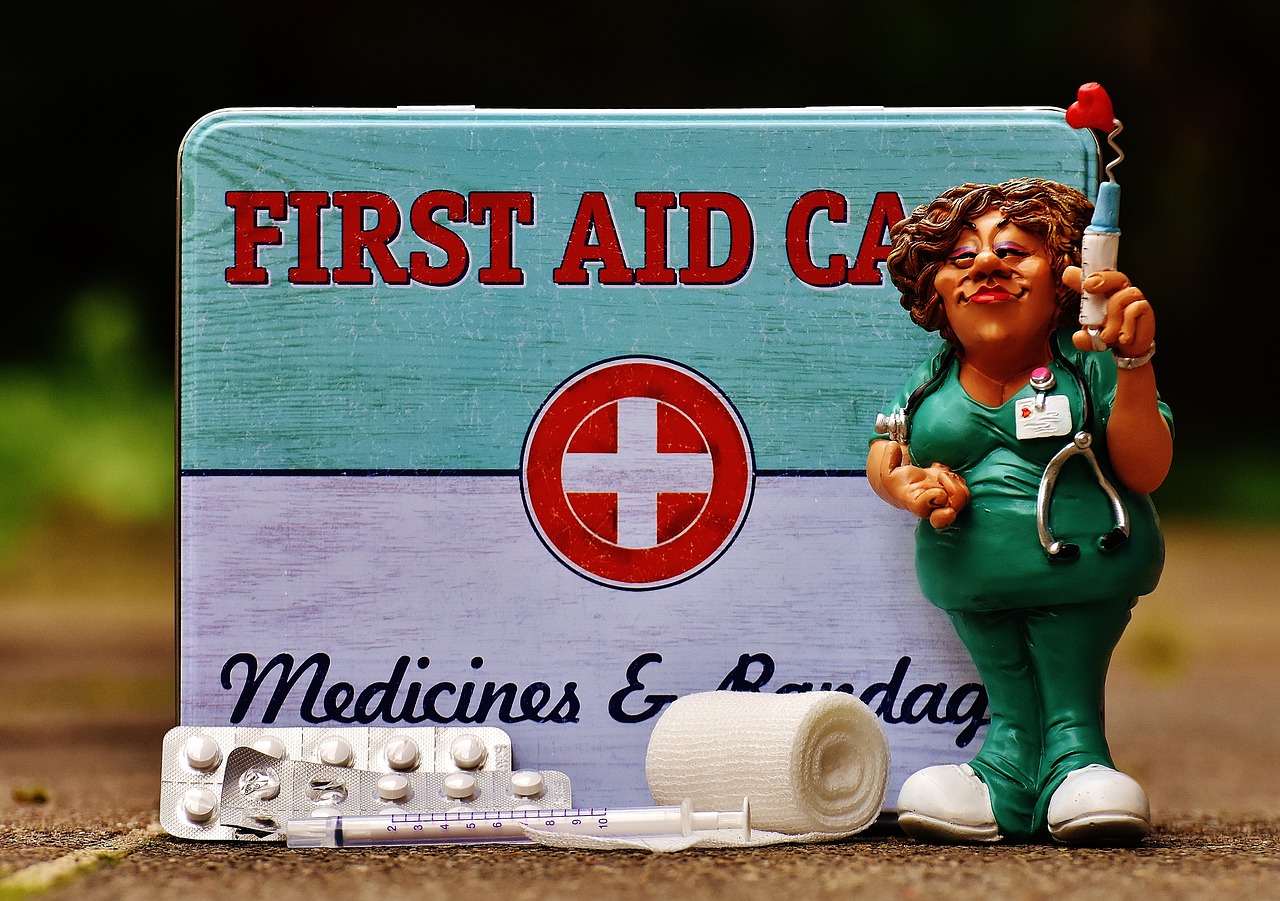
First-Aid kits are an essential item to have with you at all times. Whether you’re at home or stepping out, it could be a literal lifesaver! Here’s a simple First Aid Kit that you can keep with you at home or carry it with you.
Here’s our easy-to-manage list of must-haves!
1. First Aid Manual
This is an obvious but important one, so you know what you’re getting yourself into. Incorrect first-aid can have unwelcome side-effects. Remember that unless you know exactly how to administer the first-aid, it’s preferable you call a medical professional.
2. Gloves
This will help to keep both your hands and the skin surfaces sterile and germ-free. Latex gloves are avoided in first-aid kits because there is a possibility of a latex allergy being caused. Nitrile and Vinyl gloves are preferable and minimize all risk.
3. Bandages
Bandages are for wounds that require protection from the atmosphere. Simple Band-Aids are necessary for surface cuts and scrapes. More severe injuries like sprains and fractures require elastic bandages that compress the wound.
4. Gauze
Gauze is a type of bandage. It has an absorbent barrier to prevent adhering to wounds. For example, with a burn or a laceration, any other material might stick to the wound causing further injury and/or infection.
5. Surgical Tape
Surgical tape is a pressure-sensitive adhesive, used to keep the bandage in place over the wound. It keeps the wound breathable and allows air flow. Often it contains other compounds that prevent infection such as zinc oxide.
6. Alcohol Swab/ Disinfectant
Alcohol swabs are utilised to disinfect small cuts, scrapes, bug bites and new blisters. Each swab should be used only once and never be used for multiple people.
-
Hydrocortisone Ointment (for rashes)
This is a topical steroid used to treat inflammation, redness, and swelling. Skin conditions such as contact dermatitis, mild poison ivy or oak, allergies, and insect bites can be treated with hydrocortisone ointment. However, overuse can lead to nausea, blistering, stretch marks, dizziness and headaches.
8. Antiseptic Ointment
Antiseptic creams kill germs and microbes at the site of the wound thus preventing infection. It is used for minor wounds like cuts and abrasions.
9. Diclofenac/Anti-Inflammatory Gel
Diclofenac is an analgesic, which means it reduces pain and inflammation. It is used for muscle/joint sprains as a topical treatment.
10. Thermometer
A thermometer is a basic necessity used to measure body temperature in case of a fever. Thermometers are an absolute staple of every first aid kit. Digital thermometers are preferable as they gauge the temperature accurately.
11. Cold/Hot Pack
Heat increases blood flow and reduces joint pain, stiffness and promotes movement while a cold compress reduces swelling and inflammation, stops bleeding and restricts blood circulation which numbs the pain. It also helps with bruising. Both provide immediate relief and are good to have on hand in case of an emergency.
12. Tweezer
In case of a splinter or a small glass piece wedged in the skin, tweezers may be useful in extracting the small object. It is not an indispensable part of the first aid kit, however, it is likely to come in handy. If the injury goes deeper into the skin, it is recommended to rush to a hospital instead of trying to fix it yourself.
DISCLAIMER: Ask for a doctor’s guidance before using these, especially in case of medicinal allergies.
Tags-First Aid Kit Essentials, essentials for a first aid kit, first aid kit basic list, emergency first aid kit essentials, first aid kit travel essentials, essentials to a first aid kit










